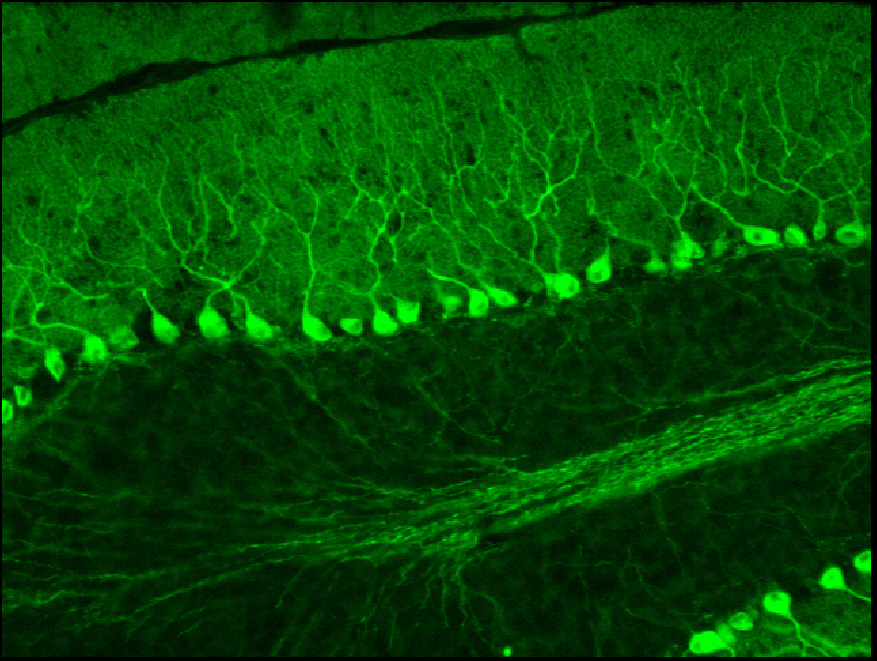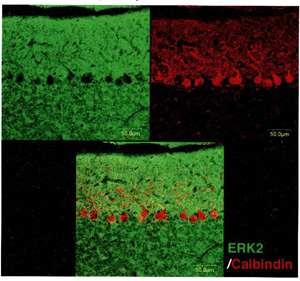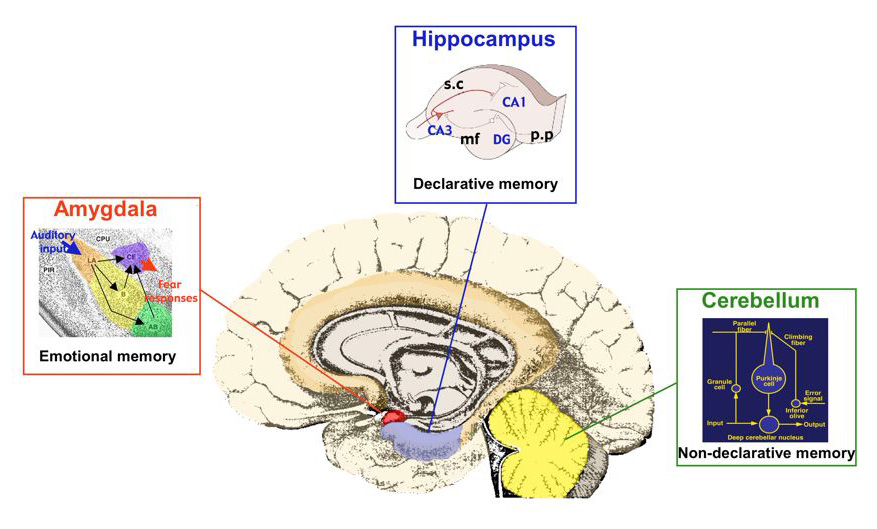Research
"Brain, the organ of memory and cognition.”
One
of fundamental but
attractive questions in the field of neuroscience is to
understand the molecular mechanisms
underlying neuronal plasticity and learning
& memory. Individuals live in different enviroment. We
have to adapt ourselves, i.e., we have to change our behaviors
according to the given environment. However, it
is impossible to design one's gene before one's birth according to
their living enviroment
forseeing the life after the birth. In addition, the information
aviailable from our gene is not enough to survive in the ever-changing
environment. Memory is defined
as follows; "Changes of behaviors by the function of experience".
Neuronal
plasticity, and its procuct memory give us the
adaptability to a given environment
by compensating the limited
information available from our
gene. We are attacking the mechanisms of Memory by using
multidisciplinary approaches.
Research goal of our unit
"Description of the machinery for neuronal plasticity, and learning & memory by molecular words”
- Signal transduction pathways required for short-term memory
- Gene expression associated with long-term memory
"Find the way for the treatment of Age-related memory decline"
- Look for the cause of memory dcline
- Explore the molecuar targets for drug treatment
Plan of attack
“Multidisciplinary approach”
- From molecules to physiology to behaviors
“Memory-related gene profiling”
- Identification of “Memory genes”
"Characterization of Age-related memory decline"
-



(Click for detail)
(Click for detail)
Amygdala, Hippocampus and Cerebellum
(Click for detail)
In addition to state-of-art research equipment and the accumulated knowledge on gerontology research, TMIG, next to the hospital specialzed for elder population, has a variety of disease-related resources are avialble such as human brain bank.
Please see the TMIG main research page for detail.
I. What's new? II. Introduction III. Members IV. Publications
V. Annual Reports VI. Contact Us VII. Photo Gallery
TMIG main web site